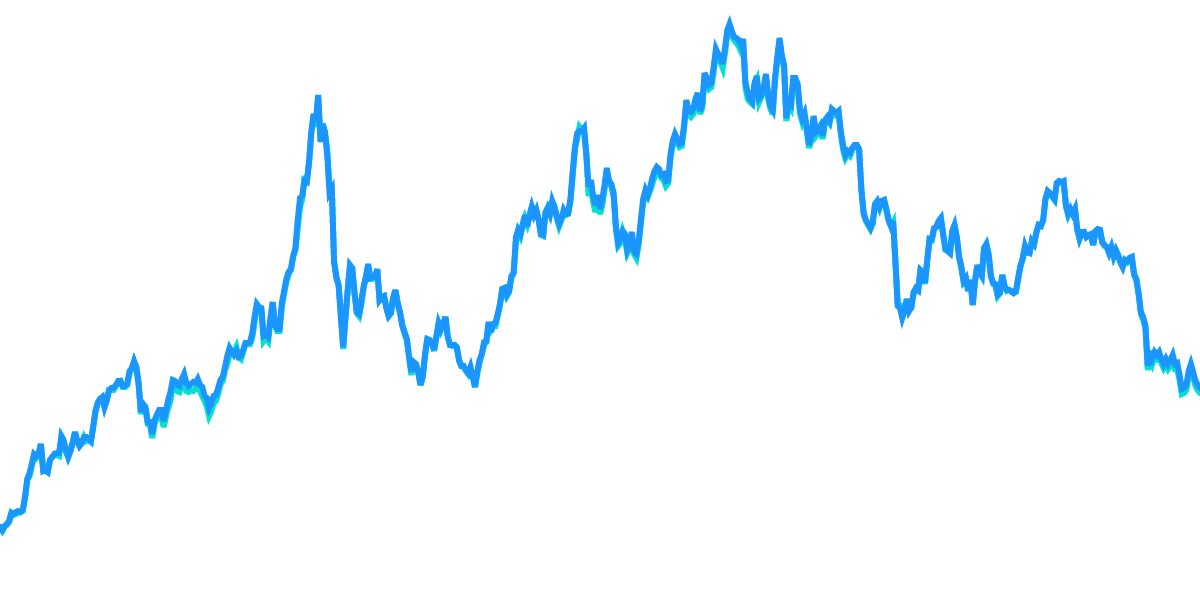
"Small" LP Actions
Apr 11, 2022 - What percent of LP adds to each pool are small (<$1k USD)? Is there a relationship between the chain and the proportion of “small” LPs?

Swap Size (Thorchain)
Dec 4, 2021 - On THORChain, users can swap their digital assets for other digital assets. The network aims to give users access to: 1.A large variety of assets through cross-chain compatibility and simple asset listing 2.Superior user experience through open finance protocols and permissionless access 3. 1-transaction access to fast chains (Binance Chain), smart chains (Ethereum), censorship-resistant chains (Bitcoin) and private chains (Monero). How Swaps Works: Users can swap any assets which are on connected chains and which have been added to the network. Users can swap from any connected asset to any other connected asset. They can also swap from any connected asset to RUNE. https://docs.thorchain.org/roles/swapping

UST-LUNA Highway
Apr 18, 2022 - Over a time period of your choosing, display the following: -daily minted UST and burned LUNA -daily burned UST and minted LUNA What are some trends you can observe for each of the charts above?

More Mints
Apr 18, 2022 - Metaplex is an open source protocol that allows for the creation and minting of NFTs using a standardized format across wallets and applications. It is essentially the backbone architecture for Solana NFTs. How many NFTs have been minted over the past week? Since the beginning December, how many NFTs have been minted per week? Chart the growth of unique purchasers over time. What percentage of all mints have been via Metaplex's Candy Machine?

STYLLAR
Dec 19, 2021 - In this dashboard we take a look at STYLLAR NFT as well as sales volume and number of transactions in random earth marketplace.

Tracer Voters
Feb 28, 2022 - How many people (addresses) have voting rights in tracer? How much of that has been deposited in major decentralized exchanges(DEX)? what is the breakdown per DEX

Net Liquidity
Dec 18, 2021 - About Thorstarter Thorstarter is a first-of-its-kind model: a hybrid IDO launchpad that meets decentralized liquidity and investment DAO. TS will function as a decentralized organization that works as a decentralized VC firm, investing with its own native currency into new projects and splitting 50% of the launch with DAO members via a native governance token — vXRUNE. DAO members are simply anyone who holds vXRUNE. The DAO treasury will earn fees, and these fees will be distributed in part to vXRUNE holders. The ultimate goal of the Valhalla DAO is simple — to grow the THORChain ecosystem by deepening liquidity for long-tail, up-and-upcoming projects. $THOR Token launch on thorstarter THORSwap is the leading multi-chain, decentralized exchange (DEX) platform powered by THORChain that allows DeFi users to perform cross-chain swaps in a permissionless, trustless, and non-custodial manner. Following the recent closing of a $3.75M round, THORSwap is primed and ready to launch its $THOR token with a Thorstarter IDO. The $THOR IDO on Thorstarter will involve 2% of THORSwap’s total supply. $THOR Token launched on Thorstarter on November 1st, at the same price per token as the private sale. This will be a capped token launch, meaning each participant is capped at max $300 per participant. This is intended to encourage much broader community participation (minimum 2500 participants) and to limit whale activity. https://blog.thorstarter.org/thorswap-ido-date-and-guide-november-1st-1acdf595b199

Number Of Users Entering the Sushi liquidity pools
Nov 20, 2021 - Liquidity pools are place to pool tokens (which we sometimes call liquidity) so that users can use them to make trades in a decentralized way. These pools are created by users and decentralized apps (or Dapps, for short) who want to profit from their usage. To pool liquidity, the amounts a user supplies must be equally divided between two coins: the primary token (sometimes called the quote token) and the base token (usually ETH or a stable coin). SushiSwap's liquidity pools allow anyone to provide liquidity. you can provide liquidity in link: https://exchange.sushi.com/#/pool When they do so, they will receive SLP tokens (SushiSwap Liquidity Provider tokens). If a user deposited $SUSHI and $ETH into a pool, they would receive SUSHI-ETH SLP tokens. These tokens represent a proportional share of the pooled assets, allowing a user to reclaim their funds at any point. Every time another user uses the pool to trade between $SUSHI and $ETH, a 0.3% fee is taken on the trade. 0.25% of that trade goes back to the LP pool. The value of the SLP tokens, which represent the shares of the total liquidity each pool, is updated with each trade to add their value relative to the tokens the pool uses to trade. If previously there were 100 SLP tokens representing 100 ETH and 100 SUSHI, each token would be worth 1 ETH & 1 SUSHI (note in this example, ETH and SUSHI are the same relative value). If a user were then to trade 10 ETH for 10 SUSHI in that pool, and another user were to trade 10 SUSHI for 10 ETH, then there would now be 100.025 ETH and 100.025 SUSHI. This means each LP token would be worth 1.0025 ETH and 1.00025 SUSHI now when it is withdrawn. Source : https://docs.sushi.com/products/amm-exchange/liquidity-pools

Orca + Jupiter Volumes
Mar 12, 2022 - Let's take a look at popular Swaps and success rate on Orca and Jupiter Platforms.

stETH vs ETH
Jun 6, 2022 - How has the price of stETH compared to ETH? Are there any events that triggered a big difference in price between the two tokens?

Active Weekly Users : sushiswap vs uniswap
Nov 13, 2021 - Uniswap and SushiSwap are competing decentralized exchanges (DEXs) built on the Ethereum blockchain. While UNI handles more volume and has been around for more time, SUSHI does has some unique benefits such as a yield farming platform and bonuses for token holders.

Metamask vs. Other Platforms
Jun 25, 2022 - How many users are swapping via MetaMask vs other platforms? How much volume have these users done? Chart a comparison between the two, and show the following metrics over a time period of your choosing: transaction volume, average amount swapped, and a comparison of fees.

DAI Volume Vs Other Stable Coins
Jan 18, 2022 - What Is DAI : Dai (or DAI, formerly Sai or SAI) is a stablecoin cryptocurrency which aims to keep its value as close to one United States dollar (USD) as possible through an automated system of smart contracts on the Ethereum blockchain. Dai is maintained and regulated by MakerDAO, a decentralized autonomous organization (DAO) composed of the owners of its governance token, MKR, who may vote on changes to certain parameters in its smart contracts in order to ensure the stability of Dai. What do we examine next? Comparing daily transaction volume of DAI vs Other Stablecoins on DEX swaps. in last 3 month. and, What is the DAI token mostly used for?

The Season of Swapping
Dec 24, 2021 - Which wallet address has performed the most swaps in the last 30 days? well its easy to answer . most of swaps are for bnb addresses

Binance Comparison
Nov 30, 2021 - The blockchain landscape is as vast as it is diverse. Filled with a rapidly growing number of tools, platforms, and protocols, each designed to boost the utility of cryptocurrencies and provide value to users.But in this complexity, a major obstacle has emerged. Blockchains simply can’t interact with one another. Ethereum, Binance Smart Chain, Solana, Terra, and dozens more blockchains are effectively operating in isolation, due to a lack of in-built interoperability. This has had a knock-on effect of dividing the blockchain community, who often need to pick and choose which platform to get to grips with and support. Over the years, a range of options has been pushed as potential solutions to this challenge. We’re talking about bridges — deceptively simple platforms that allow users to easily move their assets from one blockchain to another (a process known as bridging). PancakeSwap bridge, Terra Bridge, Wormhole Bridge, and even Binance’s bridge platform have seen a dramatic uptick in use over the past several months, as an increasing number of users look to interact with projects and services building on alternate blockchains. By effectively solving the liquidity issue by allowing users to move their assets from one blockchain to another at low cost, without requiring a steep learning curve or excess capital, cross-chain bridges are quickly becoming the go-to solution for those looking to regularly interact with multiple blockchains.And given their rapid adoption in recent months, it looks likely that they will continue to gain momentum in the months and years ahead as more people recognize the benefits of utilizing multiple blockchains. https://markets.businessinsider.com/news/stocks/are-bridges-solving-the-interoperability-problem-10615631 In this article, we examine two bridges protocol in the terra blockchain, the terra bridge and the wormhole. We compare the amount of assets in usd transferred and the number of transactions made by Thera Bridge and the wormhole to Bainance Smart chain. But before I continue, I will give you a little introduction to terra bridge and wormhole. What is Terra Bridge? Terra Bridge is a Web application to transfer Terra's tokens to other blockchain networks like Ethereum, binance smart chain, harmoney. Terra Bridge enables cross-chain transfer of all tokens supported by Shuttle, including Terra native tokens, most mAssets and also other token types from Terra ecosystem. What is Wormhole? Wormhole is a generic message passing protocol that connects to multiple chains including Ethereum, Solana, Terra, Binance Smart Chain and Polygon. Currently there two features built on top of the generic message passing protocol including: 1.A token bridge that allows users to seamlessly bridge wrapped assets between supported chains. 2.An NFT bridge that allows ERC721 and SPL NFTs to be transferred between Ethereum, Binance Smart Chain, Polygon and Solana. If you hold Shuttle BEP-20 UST and/or LUNA on BSC, you can migrate your tokens to Wormhole versions (USTw and LUNAw) using the Wormhole UI. The UI automatically connects to your MetaMask or Binance Wallet and scans for “migration-eligible” assets, including Shuttle BEP-20 UST and LUNA. You can then begin transferring USTw and LUNAw across Ethereum, Solana, Terra, and BSC immediately. Importantly, even if you don’t think you hold Shuttle assets, you should follow the steps below to ensure you don’t have any migration-eligible assets, which is easy to follow and handled by the UI. for more information: https://medium.com/terra-money/wormhole-v2-for-terra-the-ui-walkthrough-595ca6649ae8

Swap Size Distribution (Thorchain)
Dec 4, 2021 - THORChain is crucial to the decentralization of the entire crypto ecosystem. Being able to swap natively between multiple layer 1 blockchains in a permissionless, non-custodial and decentralised manner is revolutionary. Previously, swapping L1 assets was only possible by using centralized exchanges or wrapped crypto assets using bridges. THORChain enables native token swaps, without pegged or wrapped assets. THORSwap’s journey started in July 2020 when BEPSwap was launched on THORChain’s Single-Chain Chaos Net (SCCN). THORSwap is the number #1 decentralised exchange for THORChain. THORSwap currently supports 20+ different crypto assets across five blockchains (Bitcoin, Ethereum, Binance Chain, Bitcoin Cash, Litecoin) on THORChain’s MCCN. In this chart, we measure the size of the swap size distribution in these 5 chains.

Solana Fees
Feb 6, 2022 - Transaction fees in cryptocurrency refer to the charges a user pays when transferring crypto coins from one account to another. Before a transaction can pass or be recorded in the blockchain, it’ll require a certain fee.

Top TOKE Holders
Jun 21, 2022 - Identify the top holders of the TOKE token in January 2022, have they kept their position today?

Net Bonding Flow
May 8, 2022 - Show the net bonding amount over time. You can show a line chart with the cumulative amount bonded over time or a chart showing weekly or monthly net changes (or a visualization of your choice!)

Single-Sided Liquidity Pools
Jun 22, 2022 - Across uses single-sided liquidity pools to execute transactions between chains. How are Ethereum mainnet users interacting with these pools? How do these pool rewards compare to other liquidity pools?

Highest Sales Volume
Jun 12, 2022 - Which 3 NFT collections have the most total sales volume in the last 60 days on NFTX? These are transactions where someone redeems their NFTX tokens for a specific NFT.

Swaps to $THOR
May 29, 2022 - On May 4th, $THOR staking was enabled that yielded rewards for stakers based on THORSwap volume. Did we see a spike of swaps to $THOR around that time? Has there been any noticeable change in $THOR swapping since that event?

Algorand Governance
Jan 8, 2022 - All Algo holders are invited to become Governors and vote on important decisions regarding ecosystem development. Their votes will depend on the amount of Algos they will commit to governance for a 3 month period. What is a Governor? Governors are Algo holders who commit a stake for a 3 month governance period which will enable Governor voting on some of the most important decisions regarding ecosystem development.

Weekly Fees On SushiSwap
Nov 20, 2021 - When you swap tokens on SushiSwap, you will pay a trading fee of 0.3%. In addition to that, you also need to pay transaction fees while approving tokens, which needs to be done only once for each token. Before making a trade on SushiSwap, you should check out the price impact. It could be high sometimes, especially when you want to make a large trade or there is no enough liquidity.

Magic Eden Whales
Apr 10, 2022 - Track the top 20 wallets in terms of sales volume on Magic Eden since March 1st. What have these wallets been buying and selling the most over that time period? As in, which collections seem to have their attention? Do these wallets tend to ""sweep"" (buy a lot of the same collection at once) or patiently buy collections? How often are these wallets buying vs selling NFTs and what does their profit look like?

Swap Volume on SushiSwap Pools (ETH , POLYGON)
Dec 4, 2021 - SushiSwap is an automated market maker (AMM) protocol that works as a decentralized exchange. There is no order book or centralized authority. Cryptocurrency trading on SushiSwap is processed by the smart contracts in liquidity pools. A liquidity pool is where SushiSwap users become liquidity providers (LP) by locking their crypto assets. Anyone can be a liquidity provider on SushiSwap and earn rewards in proportion to their share of the pool. This is done by depositing an equivalent value of two tokens in the pool. Each pool works like a market, where other users can come to buy and sell tokens. In these charts we compare swap volume on the top 10 pools in ETH and POLYGON networks on sushiswap platform.

Fractionalized Dragons
Mar 16, 2022 - Bridgesplit enables any unique asset to become liquid and yield generative via NFT-collateralized lending, indexes, and more. Bridgesplit's Floor Indexes are a new NFT / DeFi primitive that enables users to create instant liquidity for their NFT assets with a fungible token that tracks the ""floor price"" of the respective NFT collection.

Tokemak Popularity
Feb 28, 2022 - Tokemak is a protocol that allows tracer governance token holders (TCR) to seek further ROI by way of yield farming. What is the popularity of Tokemak among tracer users?

Crowdsale Contributors
Mar 13, 2022 - Seed Club is a DAO that builds and invests in communities with tokens. Seed Club start a new DAO Called MclubDAO on Mirror, they Set 20 ETH as their Goal to fund project. in this Article we talk about How many users contribute to MclubDAO project and how much ETH they contributed.

Bridge Volume (Hop Protocol)
Jun 20, 2022 - How much volume has Hop bridged to Polygon, Optimism, and Arbitrum compared to those protocols’ native bridges? What is Hop’s total TVL? Create an analysis on the Hop’s TVL and how it’s changed over a time period of your choosing.

Governance Reaction to Terra
May 23, 2022 - The period between May 8th - May 13th was a busy week for Osmosis governance. What was the community response like to these proposals? How quickly did these proposals hit quorum compared to the last two months of proposals? What was the voter turnout for these proposals vs the last two months of proposals?

User Liquidity Spread
Dec 25, 2021 - The number of users providing liquidity in sushi pools has been increasing over time. How spread out is your average Sushi liquidity provider in terms of pools where they provide liquidity? Is it optimal to stick to a smaller number of pools or spread your capital across a bunch of different liquidity pools?

Transactions on Wormhole
Jan 11, 2022 - Assess transaction size & volume of transactions on Wormhole. Define a number of buckets, e.g. Minnow, Fish, Whale, and group the transactions into them. How many transactions are in each bucket?

NEAR Gas Guzzlers
Jul 25, 2022 - What contracts are users spending the most gas on to use? How has this changed over the past week? Past month?

